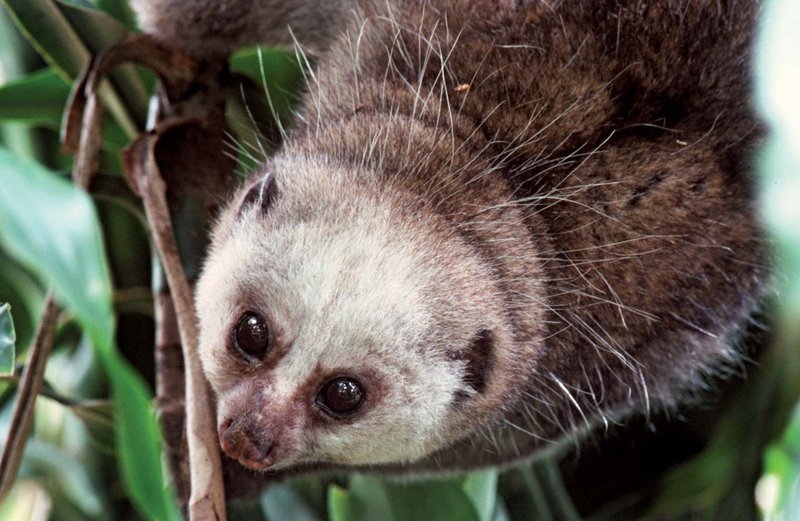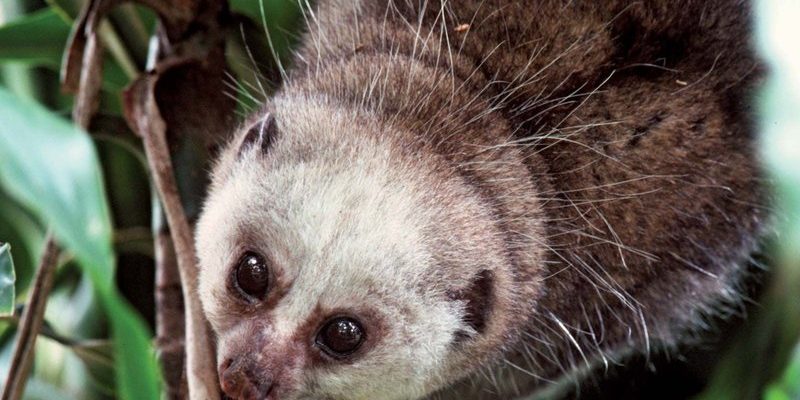
The Potto is one of those animals that might not pop into your mind when you think of wildlife. But trust me—these creatures are fascinating! Imagine a small, slow-moving primate with a big, round face and large, expressive eyes. That’s the Potto for you! They might look a bit awkward as they move through the trees, but they are perfectly adapted for their life in the dense forests of Central and West Africa.
Pottos are nocturnal, which means they come alive as the sun sets. Picture yourself taking a moonlit stroll through a vibrant rainforest, and there they are, stealthily making their way along branches in search of food. These creatures have unique traits and behaviors that help them navigate their environment, making them a remarkable part of our planet’s biodiversity.
But what exactly makes a Potto so special? From their diet to their social behaviors, there’s a lot to unpack. Keep reading, and we’ll dive into the world of the Potto together!
Physical Characteristics of the Potto
The first thing you might notice about the Potto is its distinctive appearance. They have a robust body, covered in soft, thick fur that often ranges in color from brown to gray. This natural camouflage helps them blend into the forest, keeping them safe from predators. Their large eyes are perfect for nighttime vision, allowing them to see well in low-light conditions.
In terms of size, Pottos are relatively small compared to other primates. They typically weigh between 2 and 4 pounds and measure about 12 to 16 inches long, not including their tails. Their tails are quite long, adding to their balance as they maneuver through the trees. Interestingly, Pottos also have a unique adaptation in their wrists that allows them to rotate their hands backward—this helps them grip branches securely.
These physical traits aren’t just for show; they play a crucial role in the Potto’s survival. The thick fur provides insulation during cooler nights, and their size helps them stay hidden from larger predators. It’s almost like they’ve been designed specifically for their environment!
Habitat and Distribution
Pottos are mainly found in the tropical rainforests of Central and West Africa. They thrive in humid environments that provide ample cover and food sources. These rich habitats are packed with trees, vines, and a variety of other plants, making it an ideal home for these curious creatures. While Pottos prefer dense forests, they can also be found in secondary growth and disturbed habitats.
Interestingly, they tend to stay in the upper canopies of trees rather than venturing to the ground. This arboreal lifestyle not only keeps them safe from ground predators but also gives them access to their primary food sources—fruits, leaves, and flowers. Isn’t it amazing how nature has equipped them to thrive in their specific environment?
As deforestation continues to threaten their habitats, conservation efforts are critical. Protecting the rainforests means safeguarding the lives of countless species, including the Potto. By understanding where these creatures live, we can work towards ensuring their survival for future generations.
Diet and Feeding Habits
Pottos are primarily frugivorous, which means that they mainly eat fruits. However, their diet isn’t limited to just that. They also munch on leaves, flowers, and occasionally insects and small animals. This varied diet reflects their adaptability and ensures they get the nutrients they need to thrive in their forest homes.
Feeding usually takes place at night, when Pottos are most active. As they traverse the branches, they use their keen sense of smell to find ripe fruits. What’s fascinating is how they can be picky eaters, often selecting only the juiciest pieces! This selectivity plays a role in the ecosystem, as it helps disperse seeds from the fruits they consume.
During feeding, Pottos display a unique behavior known as “slow feeding.” They take their time to savor each bite, allowing them to be discreet and avoid drawing attention to themselves. It’s like savoring a fine wine—only in this case, it’s a delicious fruit under the moonlight!
Behavior and Social Structure
The Potto is generally a solitary animal, preferring to roam its territory alone. However, they are not entirely anti-social; they communicate with each other through a variety of vocalizations, including whistles and grunts. These sounds are particularly important during mating season, as they help attract potential partners.
Interestingly, Pottos have an intriguing social behavior that revolves around grooming. While they may not have a traditional social structure like some other animals, grooming serves as a bonding activity when they do come together. It’s like a friendly chat over coffee for them—strengthening their relationships and keeping their fur clean at the same time!
You might be wondering about their movement patterns. Pottos tend to move slowly and deliberately through the trees, relying on their keen eyesight and excellent climbing skills. This slow pace might seem inefficient, but it’s an effective strategy for avoiding predators and conserving energy. After all, why rush when you’re perfectly adapted to your environment?
Reproduction and Lifespan
The mating season for Pottos usually occurs during the rainy months when food is more abundant. After a gestation period of about five months, a female Potto will give birth to a single offspring, although twins are possible. The newborns are incredibly cute, often clinging to their mother’s back as she moves through the trees, providing safety and warmth.
Mother Pottos are very nurturing, and they spend a lot of time caring for their young. As the babies grow, they start to explore their environment under the watchful eye of their mother. This period of learning is crucial for their survival, as they develop the skills needed to navigate their leafy world.
In terms of lifespan, Pottos can live up to 20 years in captivity. However, in the wild, they often face threats from predators, habitat loss, and other dangers, which can significantly reduce their lifespan. Understanding their reproductive habits is vital for conservation efforts aimed at protecting these remarkable animals.
Threats and Conservation Status
Pottos face several threats that put their populations at risk, with habitat destruction being the most significant. As forests are cleared for agriculture and logging, the natural homes of these creatures are rapidly disappearing. This loss of habitat not only reduces their living space but also affects their food sources.
Additionally, Pottos are hunted for bushmeat in some areas, further endangering their populations. The combination of habitat loss and hunting creates a challenging environment for survival. Conservation efforts are essential to address these threats head-on. Organizations are working to protect rainforest habitats and raise awareness about the importance of preserving biodiversity.
Community involvement plays a crucial role in conservation. By educating local communities about the significance of species like the Potto, we can foster a greater appreciation for wildlife. Every little action counts. Supporting sustainable practices can go a long way in ensuring the survival of these unique creatures.
Interesting Facts About the Potto
| Common Name: | Potto |
| Scientific Name: | Perodicticus potto |
| Habitat: | Tropical Rainforests |
| Diet: | Fruits, Leaves, Insects |
| Size: | 12-16 inches |
| Lifespan: | Up to 20 years (in captivity) |
| Behavior: | Nocturnal and Solitary |
FAQs
What do Pottos eat?
Pottos primarily eat a diet of fruits, but they also consume leaves, flowers, and sometimes insects. Their varied diet helps them obtain the nutrients needed for survival. They are known for being selective eaters, often choosing the ripest and juiciest fruits available in their environment.
Are Pottos endangered?
Yes, Pottos are currently facing threats to their populations, primarily due to habitat destruction and hunting. Conservation efforts are underway to protect their habitats and raise awareness about the importance of preserving these unique creatures.
How do Pottos communicate?
Pottos communicate through various vocalizations, including whistles and grunts. These sounds are especially important during mating season, helping males and females locate each other in the dense forests they inhabit.
Where do Pottos live?
Pottos are found in the tropical rainforests of Central and West Africa. They prefer dense, humid environments that offer plenty of cover and food sources, which allows them to thrive as arboreal animals.
How fast can Pottos move?
Pottos are not known for their speed. Instead, they move slowly and deliberately through the trees. This careful movement helps them avoid predators and conserve energy, allowing them to remain safe and unseen in their natural habitat.
Do Pottos live in groups?
Pottos are typically solitary animals. They prefer to roam their territory alone but will communicate with others during mating season. Grooming can occur between individuals, serving as a social bonding activity when they do come together.
What makes Pottos unique?
Pottos have several unique adaptations, including their ability to rotate their wrists, which helps them grip branches more effectively. Their large eyes are adapted for low-light conditions, making them excellent nocturnal foragers. They also have a slow-feeding habit, allowing them to be discreet while feeding.

